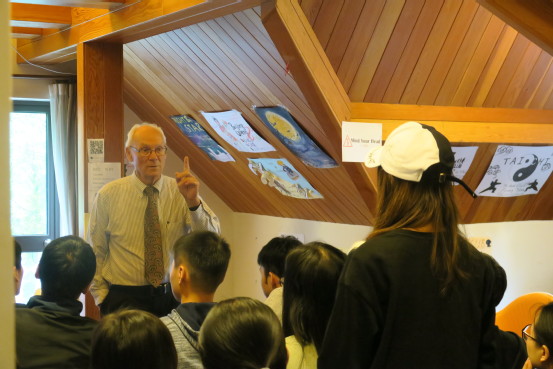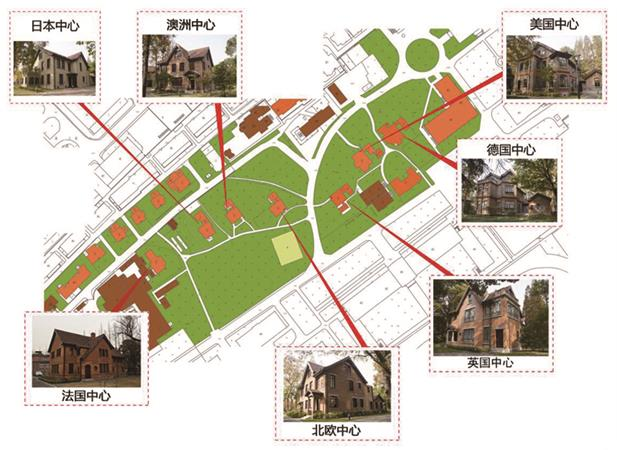﹡China’s first international cultural community on a university campus
﹡A new international cultural identity for a university with 100-year history
Overview
1. Hujiang International Cultural Park is located on the north campus of the University of Shanghai for Science & Technology (USST) on Jun Gong Road.

USST is well-known in Shanghai. Its one hundred year history can be traced to the University of Shanghai founded in 1906 and Deutsche Eedizinschule founded in 1907. Many original buildings have been preserved and retained in the university, and are considered among the best-preserved historical buildings in the city. Six detached villas at the main campus on Jun Gong Road, built between 1907 and 1936, are former faculty residences. At present, they make up the Hujiang International Cultural Park. Currently, there are designated centers for Germany, America, Britain, Japan, Nordic-Baltic, Etc. Together they form a unique international cultural community on campus.
Contributions to the University
2.1 The International Cultural Park will integrate campus resources and build an international platform for cultural learning experiences. The Park will provide faculty, students and alumni of USST with an information clearinghouse for multicultural exchange and learning, and offer support and encouragement for scholars with international educational goals.

2.2 The Park will expand current international resources and provide support for the growth of programs in international cultural exchange. Through multicultural learning and exchange, the Park will attract more first-rate international resources, promote international cultural exchange, broaden students’ international horizons and promote their sensitivity to cultural differences.

2.3 The Park will promote the international development of the university and enhance its international reputation. Expanded international opportunities and multicultural exchanges will enhance the social impact of USST and raise the University’s visibility in the international scholarly community.

The International Culture Park directly contributes to USST’s current goal of providing “Excellent Engineering Education” through the five core functions of its cultural village
3.1 International Cultural Learning:
The Centers will sponsor scholarly lectures throughout the academic year in a broad array of academic disciplines that are part of the university curriculum. The USST community will have frequent opportunities to become familiar with a wide variety of different international voices in many academic fields.

3.2 International Cultural Experience:
Representative programs will include a broad array of cultural experiences from the scientific and professional to the cultural and artistic.
3.3 International Special Programs:
Thematic programs ranging from technology and innovation to language, traditional cultures and lifestyles will be scheduled from time to time providing an opportunity for in-depth exploration of topics of special interest.
3.4 Exchange and Cooperation between universities, International Education and Research Institutes:
The diverse elements of the Park provide a unique opportunity for building cooperative programs in international research and education. The Park builds on current international partnerships through expanded communication and program planning.
3.5 Interaction and Cooperation between Universities and international enterprises:
The Park creates opportunities to partner with a variety of enterprises from different cultural backgrounds in “zero distance,” and promotes internationalized school-enterprise cooperation.
The Audience
The audiences served by Center activities include:
USST undergraduate and graduate students;
USST faculty and administrative staff;
Visiting scholars, artists, scientists and researchers;
Members of the Shanghai community;
Visitors to Shanghai with a professional interest in Center programming and exhibits.




